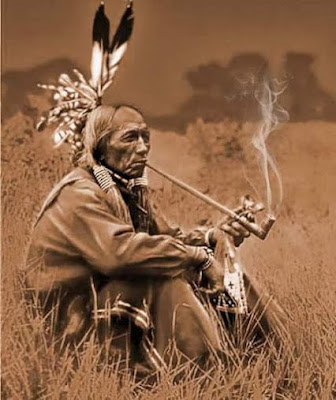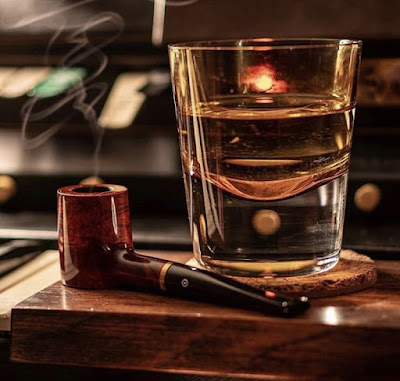The corn cob pipe is an unmistakable symbol of American heritage—a simple, affordable, and reliable tool for pipe smokers that has endured for over a century. From the Missouri Meerschaum Company to the hands of legendary figures like Mark Twain and General Douglas MacArthur, the corn cob pipe has cemented its place in tobacco history.
But where did it all begin? How did a humble agricultural product become one of the most beloved smoking pipes in the world? Let’s take a deep dive into the fascinating history of corn cob pipes and their lasting impact on the world of pipe smoking.
The Birth of the Corn Cob Pipe
The corn cob pipe is a uniquely American invention, dating back to the 19th century in the heartland of the United States.
The Henry Tibbe Story: Missouri Meerschaum Is Born
The origin of corn cob pipes can be traced to Henry Tibbe, a Dutch immigrant who settled in Washington, Missouri, in the 1860s. Tibbe was a woodworker by trade, making furniture and various wooden items.
According to legend, in 1869, a local farmer came to Tibbe’s workshop with an idea—he had carved a pipe bowl out of a dried corn cob and wanted Tibbe to add a wooden stem. The farmer reported that the pipe smoked remarkably well, and Tibbe, intrigued by the design, decided to refine it.
From Experiment to Industry
Tibbe began experimenting with different ways to harden the corn cob, eventually perfecting a method that involved drying and coating the cobs with a plaster-like substance to increase durability. The new pipes were a hit, and by 1878, he transitioned his business entirely to making corn cob pipes.
Realizing he had something special, Tibbe patented the design and officially established the Missouri Meerschaum Company in 1907—a name chosen because the smooth smoking quality of his pipes reminded people of meerschaum pipes from Turkey.
To this day, Missouri Meerschaum remains the world's leading manufacturer of corn cob pipes, producing millions of pipes each year in Washington, Missouri—the “Corn Cob Pipe Capital of the World.”
Why Corn Cob Pipes Became So Popular
Corn cob pipes became immensely popular for several reasons:
1. Affordability
- Corn cobs are cheap and plentiful compared to briar or meerschaum.
- This made them the go-to pipe for people who wanted a quality smoke without a hefty price tag.
2. Excellent Smoking Qualities
- Many pipe smokers claim that a corn cob pipe smokes cooler and drier than a briar pipe.
- The porous nature of the cob absorbs moisture and reduces tongue bite.
3. No Break-In Period
- Unlike briar pipes, which require a break-in period to build cake, corn cob pipes smoke well right from the first bowl.
4. Easily Replaceable
- Cobs are durable, but if they wear out, they can be easily replaced at a low cost.
- Many old-time smokers simply discarded them after heavy use.
Famous Corn Cob Pipe Smokers
Over the years, corn cob pipes have been favored by some of the most iconic figures in American history.
Mark Twain
Perhaps the most famous literary figure associated with the corn cob pipe, Mark Twain was rarely seen without one. The Missouri native was a lifelong pipe smoker and championed the simple, rustic charm of the cob.
General Douglas MacArthur
The legendary WWII general made the corn cob pipe a symbol of American strength. His custom extra-long-stemmed Missouri Meerschaum pipe became as famous as the man himself.
Popeye the Sailor
The fictional Popeye the Sailor also helped popularize the corn cob pipe. His exaggerated puffing and tooting sounds from the pipe became iconic in comic strips and cartoons.
Huckleberry Finn & Tom Sawyer
Twain’s most famous characters—Huck Finn and Tom Sawyer—helped cement the corn cob pipe as a symbol of rugged, carefree adventure.
Corn Cob Pipes Today: A Lasting Legacy
Despite the rise of modern materials and high-end briar pipes, corn cob pipes remain hugely popular. Missouri Meerschaum, still based in Washington, Missouri, continues to produce a wide variety of styles to suit different smokers' preferences.
Modern Innovations in Corn Cob Pipes
- Different Shapes & Sizes – From the classic Country Gentleman to the smaller Eaton, there’s a cob for everyone.
- Acrylic Stem Options – Some models now come with high-quality acrylic stems, making them more durable.
- Custom & Artisan Cobs – Pipe makers have started modifying cobs with exotic materials for luxury, one-of-a-kind corn cob pipes.
Who Should Try a Corn Cob Pipe?
- Beginners – Low cost, easy maintenance, and a forgiving smoke make them ideal for new pipe smokers.
- Outdoor Smokers – Perfect for fishing, camping, and traveling, where you don’t want to risk damaging a high-end briar pipe.
- Every Pipe Smoker! – Even experienced smokers keep a few corncobs in rotation for their easy, dry smoking characteristics.
Conclusion: The Enduring Charm of the Corn Cob Pipe
The corn cob pipe is an American classic, a simple yet effective smoking instrument that has remained popular for over a century. From the humble workshops of Henry Tibbe to the pockets of legendary figures like Mark Twain and General MacArthur, these pipes continue to be an affordable, quality option for smokers around the world.
Whether you're a seasoned pipe smoker or a beginner looking for an easy first pipe, the corn cob remains a time-tested, reliable companion.
So, grab a Missouri Meerschaum, pack your favorite tobacco, and experience a piece of American pipe-smoking history. 🚬 🌽
What’s Your Favorite Corn Cob Pipe?
Do you have a favorite Missouri Meerschaum model? Or perhaps a great story about your first cob? Let us know in the comments! 👇





































